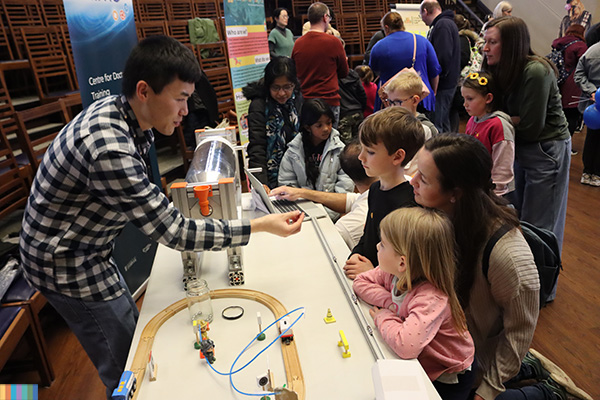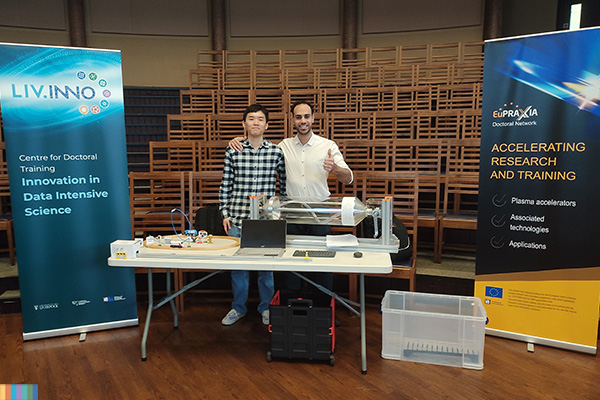LIV.INNO reaches out as part of British Science Week

British Science Week ran from the 8th to 17th March this year and as ever many science outreach events were arranged to coincide with this. The Victoria Gallery and Museum, which is part of the University of Liverpool, organised an event on Saturday 16th of March aimed at the visitors who would normally visit at a weekend who are mainly family groups. Researchers from across the university were invited to display an activity about their research at this event.
Qiyuan Xu, who is a first year LIV.INNO student and Andres Levia Genre, who is a Fellow as part of the EuPRAXIA-DN project attended this event to talk to the visitors about the ‘Physics of Particle Accelerators’. They took lots of hands on demonstrations with them including the Surfatron, which shows how sub-atomic particles can be accelerated using electromagnetic waves, and the Gauss rifle which uses magnetic fields to accelerate a particle. Electromagnetic fields are used in real particle accelerators to both accelerate and steer the beam. Qiyuan’s PhD project involves developing diagnostics on the LHC at CERN. He also showed how the LHC circulates and collides beams of particles using a train set.

Qiyuan and Andres at the British Science Week event.
The event attracted almost 500 people over the course of the day with lots of positive feedback received from those who participated. Qiyuan and Andres were also both very positive about their experience. Qiyuan said ‘I think this event offered a fantastic opportunity to showcase equipment directly relevant to my project and our research in accelerator physics. Engaging with the audience and explaining the concepts in the field was incredibly rewarding. One of the most memorable aspects was witnessing the excitement among the younger attendees, particularly with the mini linear accelerator we built using just magnets, and both the hardware and software Surfertron. It was generally a remarkable experience to share our passion and insights with such an eager crowd.’